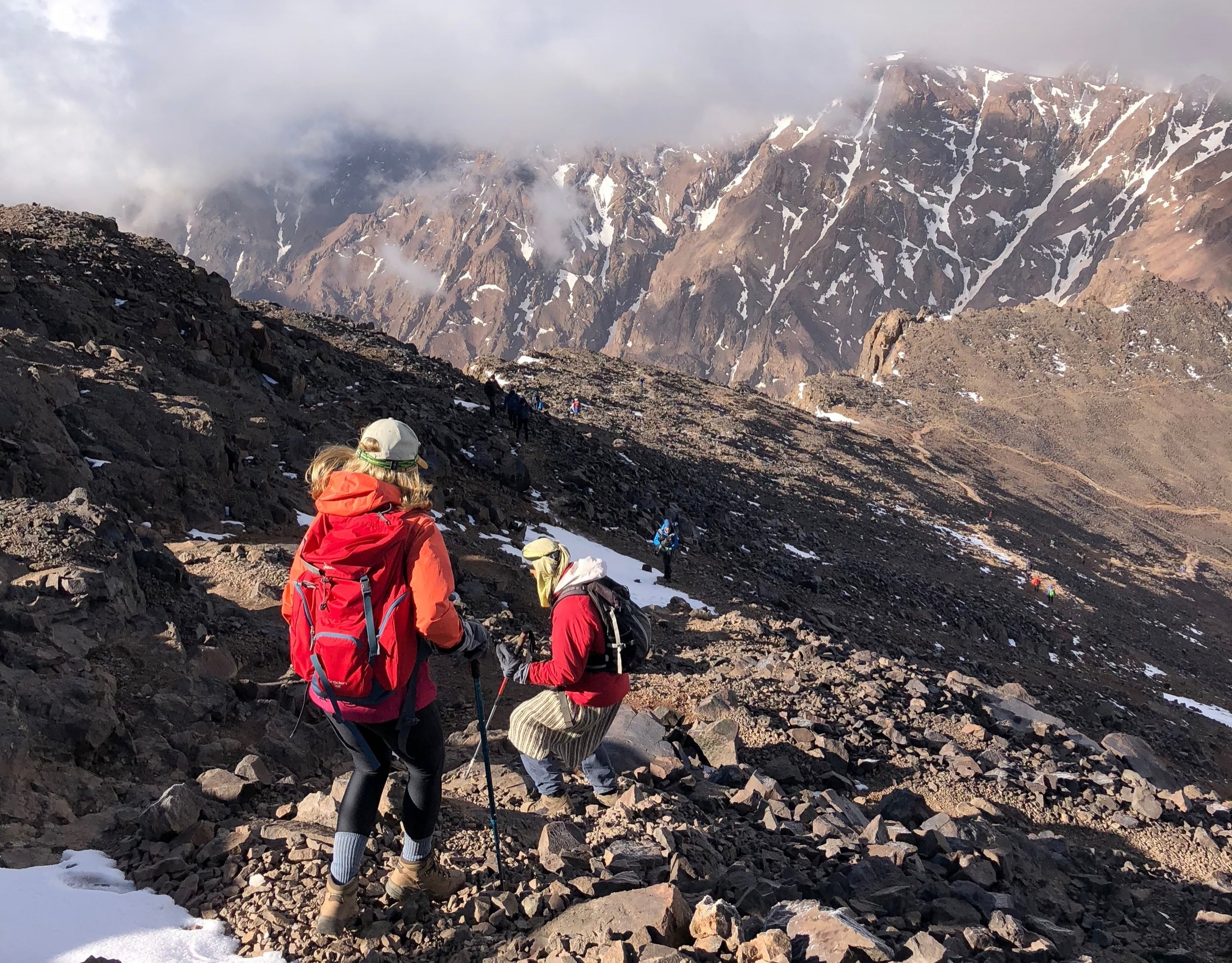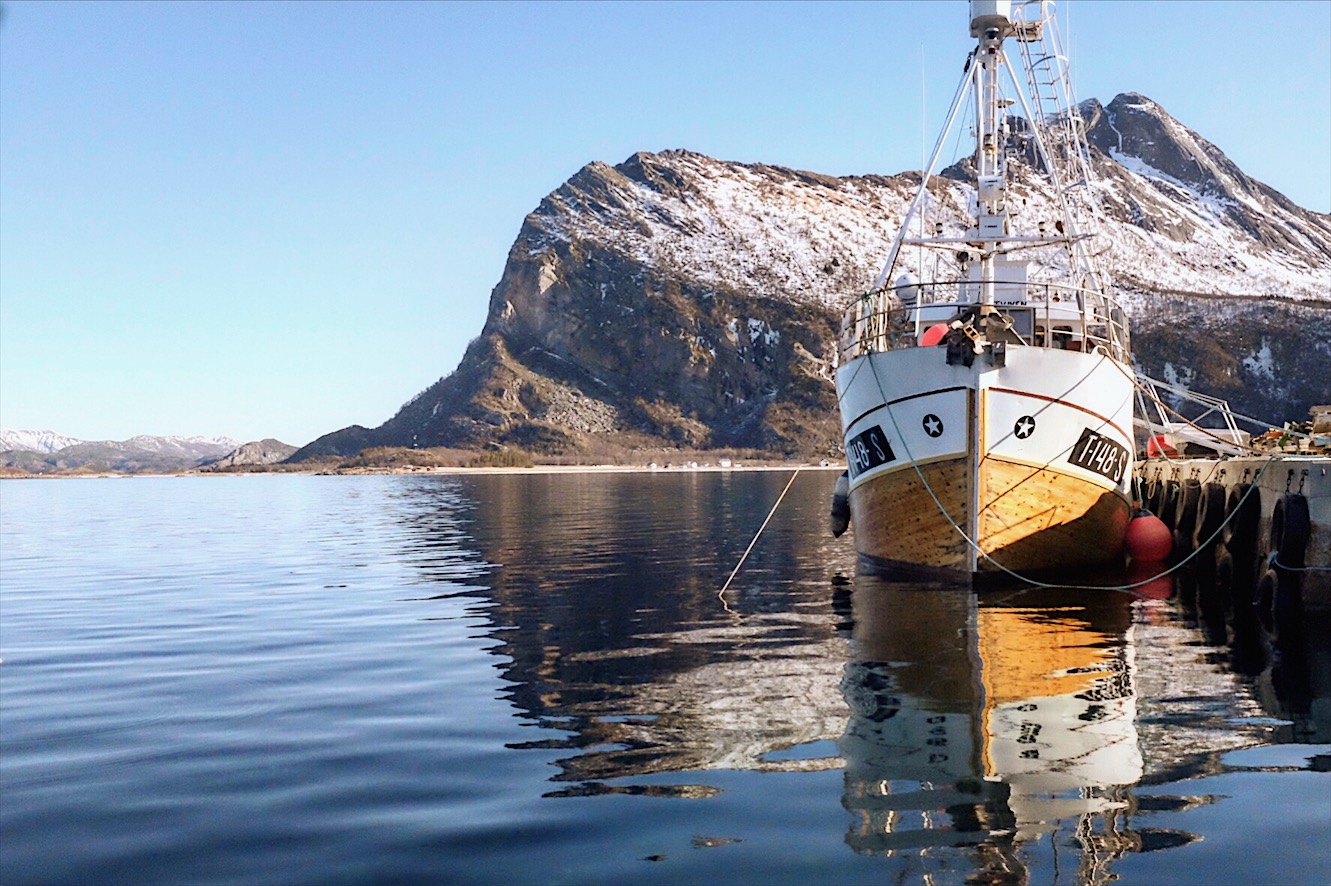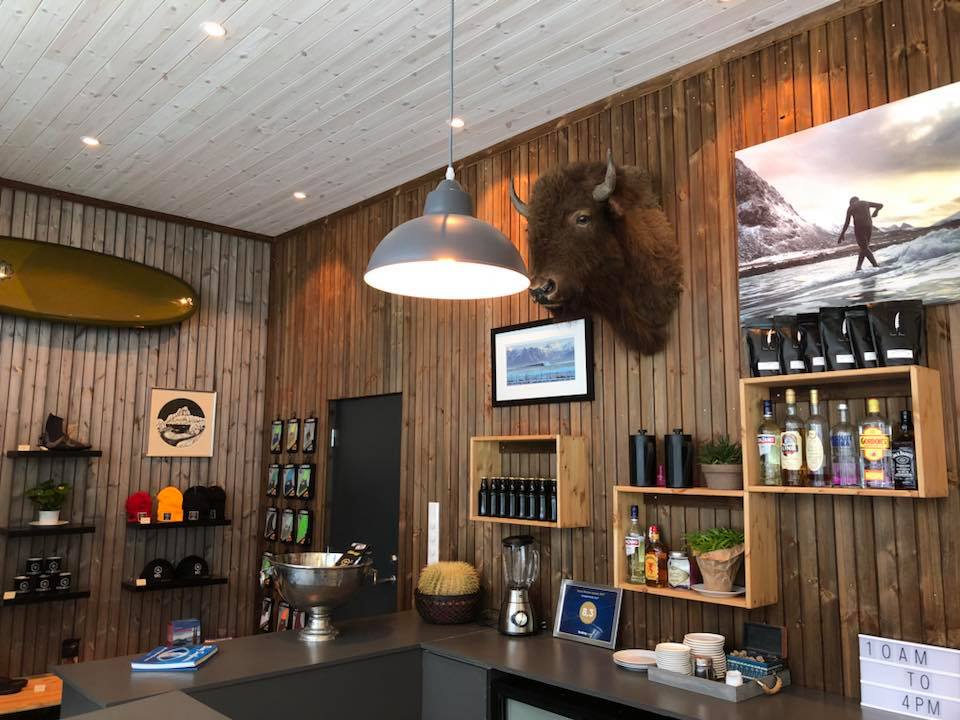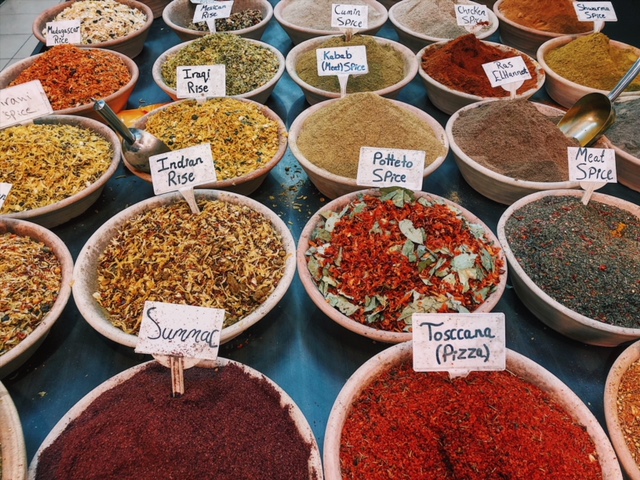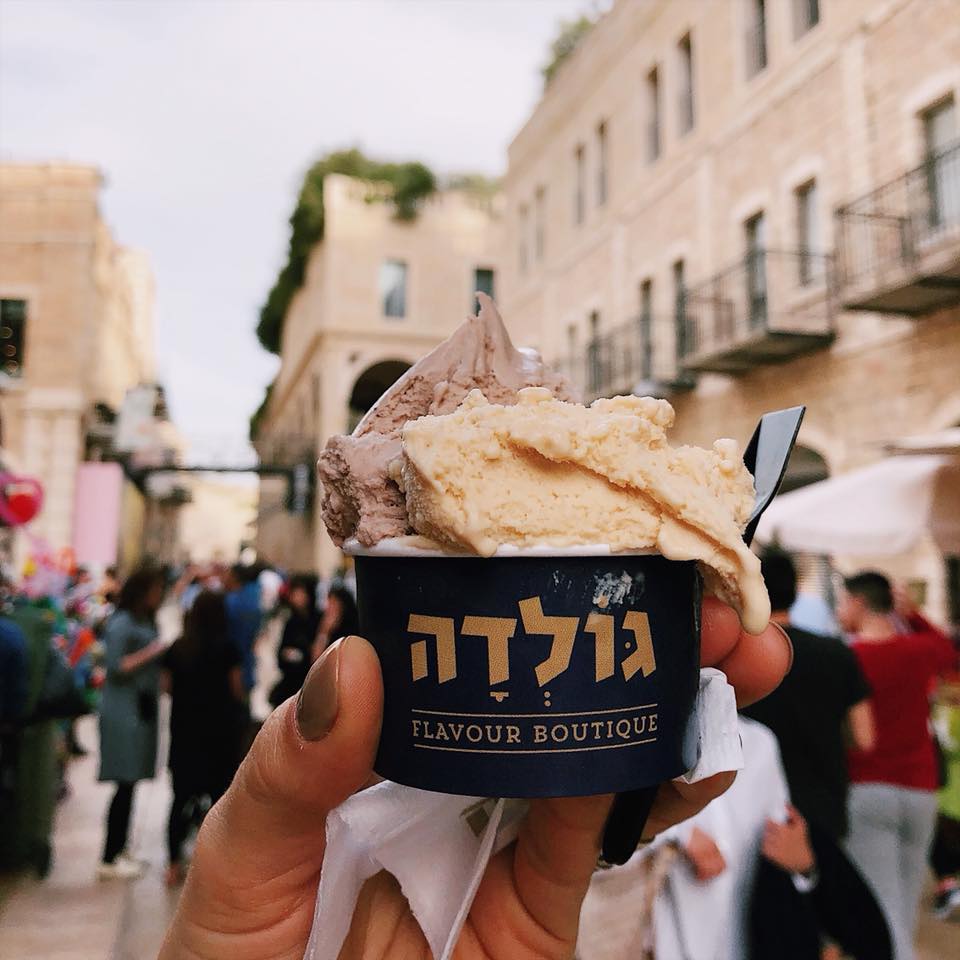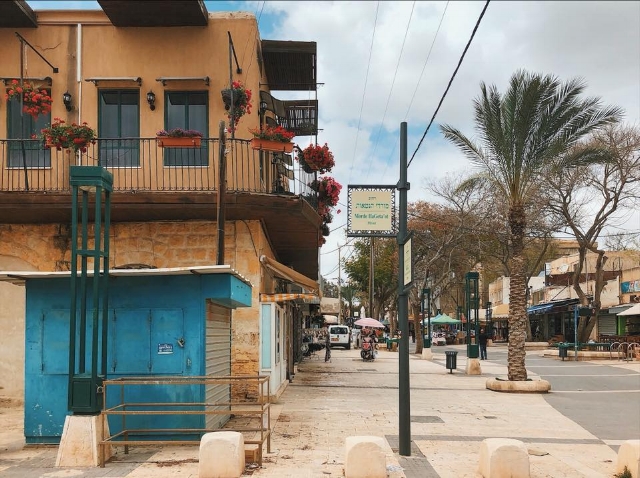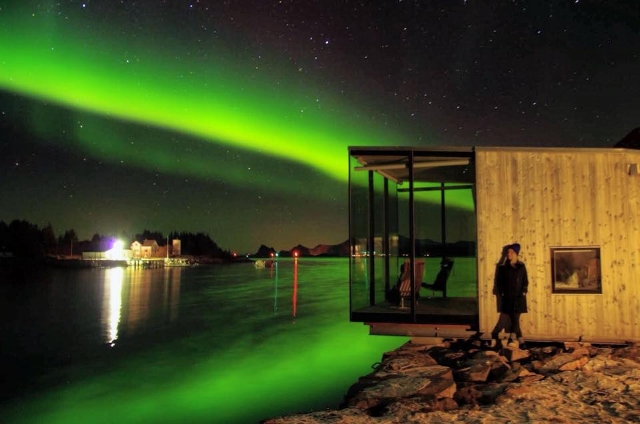When I survey my ever-growing list of mountains to climb, Mt Toubkal never would have made an appearance a few years back. It's a bit off the beaten path from some of the other big aspirational climbs around the world (Kili, Vinson, Elbrus, etc) but at 4,167 metres (13,671 ft), it is the highest peak in the Atlas Mountains, Morocco, North Africa and the Arab World. Our guide, Mohamed, told us that Toubkal is actually said to be a harder hike than Kili given the relative brevity of the hike. Rather than a long couple week slog, this is a direct uphill walk/crawl for 2 days.
Women's cooperatives selling rugs on the way from Imlil to the Kasbah
Coming down from the Toubkal Summit
But for me, what was most appealing was that we could summit a significant mountain in the course of a long weekend, and I could be back at my desk for work on Tuesday morning. As soon as I learned this, I booked the trip immediately. Done.
What I didn't fully expect and was pleasantly surprised by was the fact that we could also partake in a lot of Moroccan cuisine/culture all in the same four days. Our experience at Kasbah du Toubkal - with particular thanks to our guides Mohamed, Yousef, and Hassan - was certainly a memorable one and an adventure I will recommend for years to come.
Without further ado, here's how the schedule panned out:
Day One: Marrakech / Imlil / Kasbah du Toubkal
Our flight landed in Marrakech around 4pm and we opted to go straight to the Kasbah rather than making a pit stop in Marrakech. I had been to Marrakech before, and knew we would have some time at the tail end of our trip to wander around. From my perspective, a few hours (or maybe one night i.e. 24 hours maximum) is more than enough time in Marrakech. It's a bit like some of the other crazy cities of the world - the best comparison I could give was to Kathmandu, for anyone who has been to Nepal - and generally I find that walking around a city with so much chaos is more stress than its worth to me. We were ready to get to the mountains.
Kasbah du Toubkal, one of Nat Geo's Unique Lodges of the World, kindly handled all arrangements for us to get to Imlil. Our driver met us at the airport holding a big sign with our name, and off we went. We drove through dusty red terrain and winding roads as we climbed into the mountains, passing by little villages (Asni is not to be missed if you want to visit a weekly souk) and even the Richard Branson hotel (our driver rolled his eyes, as he declared "that place is a fake experience - everything they bring in is from India and the UK!") Probably won't need to visit that tourist trap anytime soon.
Walking through Imlil with our luggage mule
In less than 90 minutes in the car, we arrived to Imlil, a very small village which serves as the epicenter of the valley. From here, we exited our taxi and were greeted by a mule sent down from the kasbah. Our bags were effortlessly loaded into his carry baskets and we headed on our way. After walking only five minutes through town and then uphill through a wooded area, we emerged into Moroccan kasbah bliss, entering large wooden doors which led to the main room where folks from around the world were gathered, eating tagine and sipping on Berber whiskey (better known to us Westerners as mint tea).
A very warm welcome to Kasbah du Toubkal, indeed.
Main entry way to Kasbah du Toubkal
Because it was Ramadan, we had brought our own wine to the Kasbah, as none would be available for another few weeks. A purchase we were glad to have made at the airport in anticipation of our stay. We ended our night by the fireplace, chatting with a fellow traveler (hi Barry!). Life is good.
Day Two: Kasbah du Toubkal / Aroumd / Refuge du Toubkal
Breakfast at the Kasbah consisted of local fruits / dates / grains, traditional homemade yogurt (I wish I could have brought some home!) as well as an ample selection of Moroccan pancakes, honey, almond butter, and always the traditional bread wheel to enjoy with your choice of toppings. If there's one thing for sure when visiting Berber villages, it's that you won't go hungry: this place embodies hospitality at its finest, always providing you with everything you could ask for -- and then some.
Breakfast bar at Kasbah du Toubkal
Typical breakfast at Kasbah du Toubkal
After packing an overnight bag to be carried by our mule, we met our guide Mohamed and got started around 9:30am on our trek into the High Atlas Mountains. The first day starts with an easy walk to Aroumd, the highest Berber village in the Ait Mizane Valley of the High Atlas Mountains of Morocco. Its population sits at around only 1,900 people, and is largely made up of people working in tourism. The village is built on a huge moraine spur above the valley and boasts steep-tiered fields of potatoes, onions, barley and various kinds of fruit, their terraces edged with purple iris. Walnuts and cherries are some of the most fruitful trees in this area, and they export much of their crop to Marrakech and beyond.
A boy looks out from his home in a Berber village in Imlil Valley
Before long - and dare I say, almost too soon after starting our trek, Mohamed stops us for lunch in Sidi Chamharouch, a Berber settlement which has grown up around a Muslim shrine. Here, our guides prepare us a lovely lunch of tea and more salad / meat / bread than we can justify having burned the calories for. We pass by a few shops which remind me of Nepal tea houses where various trinkets are being sold, along with traditional hiking snacks: Twix bars, crisps, Kitkats, Fanta (which is "fanta-tastic," according to Mohamed) and chocolate biscuits. We say farewell to the shop owners and are headed out again - this time on a much steeper climb up.
After 6 hours total, we arrive at Refuge du Toubkal, which is a pleasant surprise to us, having set our expectations low for what a dormitory-like tea house might offer. This is nothing like the tea houses we stayed in in Nepal and strikes us as majestic and almost castle-like from the outside. On the inside, you can choose to stay in either a dormitory room or a private room - with most people opting to stay in the dorm rooms. One word to the wise is that if you are a very light sleeper, you may want to do a private room, as people will be stirring all night in anticipation of a 2:45am/3am wake up time to summit Toubkal the next morning. Someone told us that everyone will start at 3am regardless of preference (i.e. if you had wanted to start your hike later), because there's no way of possibly "sleeping in" given all the commotion of others preparing for their early hikes. They were right.
We arrived at the Refuge around 4pm which gave us plenty of time to settle in, relax, and make new friends. Several other guides came over to speak with us about Berber life/tradition, and even extended an invite for us to come back and stay with them ("for no cost!") during the August festival when everyone in Imlil comes together to celebrate. I don't think they were joking. We talked late into the night about the djellabas we would wear and the songs we would sing and dance - and laughed as we watched Youtube videos on Mohamed's phone from last year's festival, and tried to recreate the dance moves in our room before bed. I even tried to convince Mohamed that we open an ice cream store called Djellaba Gelato. The verdict is still out on that one. A night of true bliss, and contentment, indeed.
Approaching Refuge du Toubkal on the afternoon of Day 2
Day Three: Refuge du Toubkal / Toubkal Summit / Imlil
The alarm rang early at 3am, and we pulled ourselves out of our slumber, packing our bags by headlamp light, as the power is turned off in the morning hours at the Refuge. We brushed our teeth simultaneously with 100 other people preparing to climb up to the summit, and all headed down to the breakfast room to force down as many calories as we could to fuel our hike. But most importantly: coffee, all the coffee.
Heading up Mount Toubkal in good company
Nearing the summit of Mt Toubkal at 6am
What surprised us most about the Atlas Mountains was how alpine it gets so quickly. You feel like you're in the desert on day 1, until suddenly you're not - and the peaks start to rival those of the Dolomites or the Alps. We trudged through snow and ice packs (on the edge of somewhat sketchy ice slopes, which I'm glad we did not actually fully see until we were coming down from the summit). We oscillated through waves of feeling great and "oh my god it's freaking cold and windy - I want to be back in bed" but ultimately, made it to the top in about 3 hours flat. Not bad when all has been said and done. Our guides and new friends summited around the same time, so we had a nice little crew of people up there to soak in the accomplishment together. While the weather forecast had initially threatened to be quite ominous on summit day, we enjoyed nearly clear skies, with a few peaks being hugged by some puffy clouds, which only made the views more stunning.
The high of the summit wouldn't last for long - as we knew we had a long day ahead: not only 2-3 hours back down to the Refuge (that scramble down turned out to be a bit harder than you would expect, given the large ice patches in early summer, and loose rocks), but then another 6-7 hours back down all the way to Imlil/the Kasbah. We spent 10 minutes taking in the views and then started our descent, stopping at the Kasbah only for a quick tea and to grab our bags/overnight gear for the rest of the day's trek.
Picnic lunch on our way back to Imlil
The rest of the day was a calm walk and relatively effortless compared to the prior 24 hours. Sure, our legs were tired, our minds fatigued, and our faces a bit wind blown after hours spent in the early morning mountain air, but these are the days we live for, so complaints were nonexistent. We were happy, tired, and also looking forward to a hot shower. The day was punctuated with a surprise picnic set up for us by our guides, in a valley next to a waterfall, just before we hit Sidi Chamharouch. Pasta perfection. We arrived back to town around 4pm, and sat still the rest of the evening. Our new friends with whom we had summited earlier that morning were heading to Imlil, to then take a car back to Marrakech, adding another 1.5 hours to their long day, so we parted ways as they continued onward. Needless to say, we were extremely grateful for the pit stop at the Kasbah for the night.
Mules heading up on our way back to Kasbah
Day Four: Kasbah du Toubkal / Marrakech
We woke up the next morning, with the soreness starting to set in (but it hurt so good!) and ready to head to Marrakech. Again, the Kasbah facilitated a driver for us from Imlil, which made the entire transportation process fluid. Knowing that we wanted to walk around Marrakech for a few hours before our 7pm flight back to Amsterdam, they even facilitated a place for us to drop off our bags in Marrakech so we didn't have to haul them around. And the place just so happened to be right across from the main square. Easy peasy lemon squeezy (as Mohamed likes to say).
A few hours in Marrakech was enough for us, especially since we would not have an opportunity to stay in a riad, which I had done before (and highly recommend if you do decide to spend a day or two there). With only a few hours in Marrakech, we did (and I would suggest) the following:
- Visit Djemaa el Fna, the epicenter of Marrakech, with the Rahba Lakdima, also known as the Place des Épices, or Spice Traders Square
- Sit at a rooftop bar
- Eat a really really good tagine - my favorite stops: Grand Cafe de la Poste, Nomad, Le Jardin
- Enjoy a relaxing and therapeutic hammam
- Avoid the monkeys / snakes (tourist traps)
- Visit the Saadian tombs
- Visit the Koutoubia mosque
- Stay in a riad, if you have the time
After quite a few trips and expeditions under my belt, it still surprises me to this day that you can do so much in only four days. We were eternally grateful to the guides and hosts at Kasbah du Toubkal for being so gracious and generous with every single aspect of the program, and for handling all of the coordination for us - cars, hikes, booking of refuge, and food. While you can do it yourself, it certainly helps to have local knowledge. We also spoke quite a bit on the trip about the value in having a guide - especially if it's a good one. We all know that person who likes to boast that they did a trip "unguided," but I am extremely "pro-guide" as to me, a guide translates to the trip having knowledge and context - which make you more than just a trekker, but in fact, a local - if only for a short time.
Some basic stats / helpful hints about Marrakech:
- Flight time from Amsterdam: 3.5 - 4 hours
- Currency: Dirham (can be exchanged at airport)
- How to say hello: Azul
- Time zone: UTC + 1
- Coolest month: January / Hottest month: July
- International dialing code: 00212
- Arrange airport transfers to hotel via your hotel or riad to make for an easier transfer; it can be difficult for drivers to navigate directly to your accommodation
Last but not least, some quick tips for Toubkal hike:
- Wear very solid hiking boots - you will greatly struggle with sneakers, given the ice pack
- Bring trekking poles - they were extremely useful to us on the way up (and perhaps more importantly, on the way down) the mountain
- Bring/wear heavy duty gloves - my hands were freezing even with them
- Bring/wear a Buff - maybe even two - one for your ears, and one for your face. You'll need it.
- Wear plenty of windproof gear - it will be instrumental on summit day.
- Check your headlamp batteries - summit morning is quite dark until the sun comes up.
- Bring toilet paper for the squatty potties - there are a few regular bathrooms at the refuge, some with TP, but if you need to make an unexpected stop, you'll be grateful for the TP.

